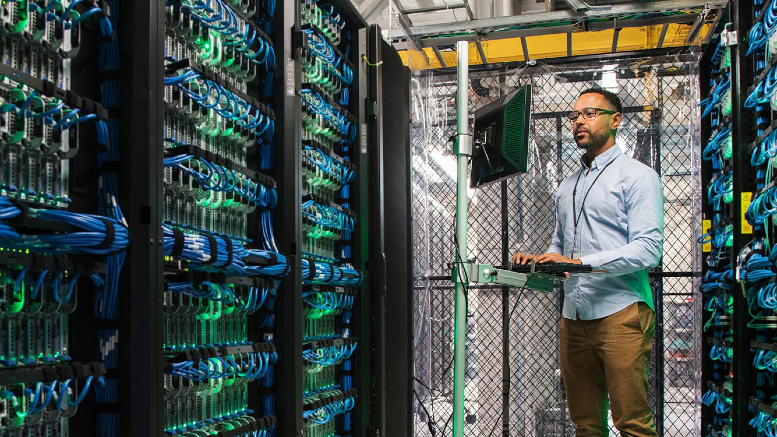Why Manufacturers Need Technology in Good Times and Bad
February 25, 2020 / Unisys Corporation
Manufacturing has seen a lot of ups and downs over the years. For example, early 2019 saw proclamations that the sector was “enjoying a resurgence in the United States.” By late summer, the U.S. global purchasing manager’s index (PMI) dropped below 50. That led industry analysts to lower their outlooks for the year ahead.
But here’s the bottom line.
Manufacturing will continue to be impacted by factors beyond its control. However, those that work now to address the factors within their control are positioned for better performance in good times and bad.
One critical way that manufacturers can position themselves for best results is by adopting modern digital technology.
Technology Helps Attract the Best Talent
Digital workplace services can enable manufacturers to attract the best talent to their companies.
Recent reports indicate the skills gap is an even bigger and more immediate problem for manufacturing than the ongoing trade war. And the National Association of Manufacturers said there were a record 522,000 jobs open in the sector as of September.
Additionally, a 2018 report by Deloitte and The Manufacturing Institute indicated4.6 million manufacturing jobs will need to be filled in the sector over the next decade. The report added that 2.4 million jobs may be left open due to a lack of trained workers.
The tight labor market and difficulty in attracting young workers makes talent both a near- and long-term challenge for manufacturing. Digital technology can help manufacturers address the talent challenge while also leading to higher-quality solutions, lessening human error, improving processes, increasing productivity, and contributing to greater growth.
Most Workers Today Value Modern Technology
Our own research illustrates that the extent to which businesses adopt leading technology has “a deep and lasting impact” on productivity and employee attitudes.
Eighty-eight percent of employees at technology leader organizations said they feel positive about their jobs. These individuals added that they are proud to work for their employers. Only 18% of workers at technology adoption laggards feel that way.
Employees at technology laggards also voiced much higher levels of frustration. Forty-four percent of workers at technology laggards said they are frustrated with their employers because of technology. And employees who work with outdated technology are 600% more likely to consider quitting.
Worker frustration and lack of engagement are costly. Actively disengaged employees cost the U.S. $483-$605 billion annually in lost productivity. And every time an organization replaces a salaried employee, it costs six to nine months’ salary on average.
Workstream Collaboration Drives Engagement, Productivity and Teamwork
That’s why manufacturers should consider investing in workstream collaboration. It allows workers to collaborate and access and share information easily, quickly and securely. That enables them to interface with colleagues and clients to address problems and create solutions.
As previously indicated, such modern technology makes workers feel positive and proud, driving greater engagement. Studies also show that highly engaged teams drive greater profitability.
Virtual Assistants Benefit Both Employees and Employers
Worker engagement and productivity – and manufacturing profitability – are also among the benefits of chatbots and virtual assistants. Such artificial intelligence- and machine learning-fueled solutions can be used to handle routine tasks so workers can attack more value-added pursuits.
And manufacturers can leverage speech-to-text and text-to-speech services to enhance chatbots and virtual assistants. That way, employees can work faster and more effectively, and manufacturers can better manage cost and scale.
Cybersecurity and ease of use should always be top-of-mind in selecting new technology. Partnering with cybersecurity experts lowers an organization’s risk. In addition, choosing solutions that are intuitive and provide consistent experiences across all devices and locations drives optimal user adoption for greater return on investment.
These Manufacturers Demonstrate What Modern Technology Makes Possible
Nutreco is one manufacturer employing such solutions today. The animal nutrition and aquafeed company adopted Unisys Digital Workplace and Infrastructure Transformation services to expand its global leadership.
Unisys application support, network services, and service desk and service management gave Nutreco the secure, scalable infrastructure it needed to support nutritional and economic models using big data to optimize feed. That allows farmers to be more profitable.
Plus, Nutreco now enjoys consistent, quality IT services across more than 35 countries and in a dozen languages. And it’s much easier for Nutreco to onboard acquired companies in countries where it didn’t previously have a presence.
A manufacturer of high-end champagne, wine and spirits also is using Unisys Digital Workplace Services to maintain its market leadership as well as to expand. This initiative supports 4,000 users in Europe and the U.S. and more than 10,000 devices globally. It covers desk-side support, distributed server management, end user productivity services, and a service desk.
As a result, this manufacturer has reported an improved employee productivity and distributor experience by reducing the time to resolve issues. Plus, it can consistently, efficiently and effectively support sales and distribution of multiple brands across the globe.
It Pays to Experience the Benefits of Modern Digital Technology
Companies that move now will be best positioned for the present and the future. That will be important, as digital technology is likely to be decisive in determining the fate of industrial manufacturing companies in the months and years to come, with early adopters of digital technology getting the financial rewards.



















